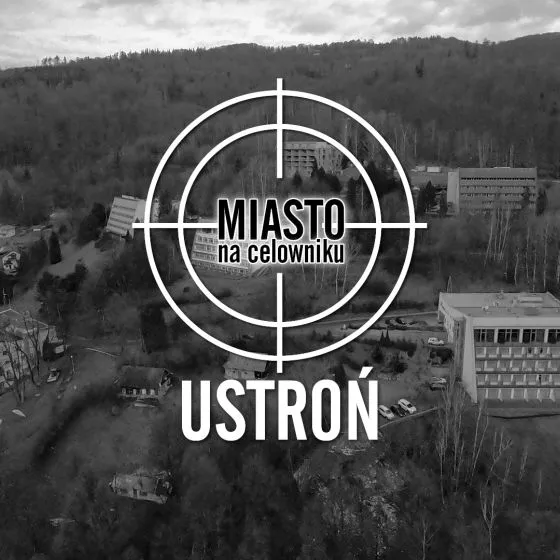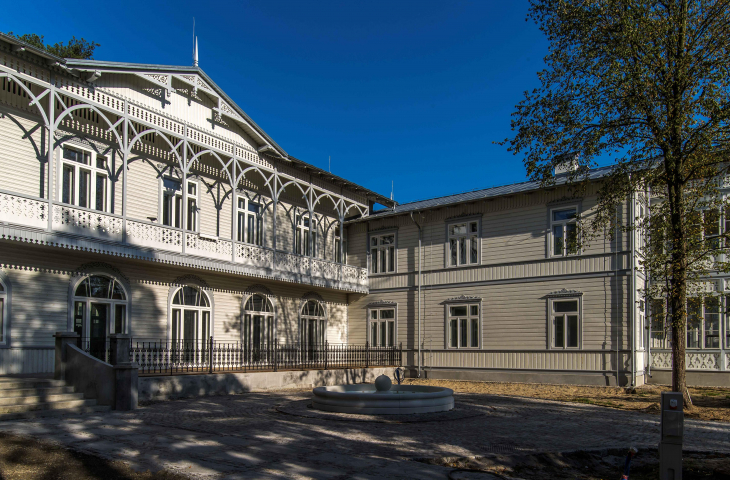"You have done something impossible, almost a miracle!" - commented supporters of the model for the reconstruction and revitalization of Abram Gurewicz's pre-war wooden boarding house in Otwock. "A blow-up, a dummy!" - accused the designers, investors and restorers, critics, whose view was that Gurewicz's new shell required too much interference - including in the skeletal structure of the edifice, and involved the loss of a century-old wooden substance.
It started with a modest summer villa, of the kind that hundreds were built in the spa town of Otwock in the first and second decades of the 20th century. Then wings were added, investments were made in modern solutions, such as sewerage, telephone connection, electricity, artists were hired to decorate, until the building turned into a luxury hotel consisting of as many as seven wings.
A postcard with a view of the spa
photo: MIRAI Clinic
The biggest attraction was the expansive, storied verandas typical of the local style known mockingly as swidermajer (from bidermajer). Richly decorated with lace carving, they charmed passersby and tempted them with exoticism, while for guests they were a place for sunbathing, chatting and naps. And all in the resinous fumes of the pine trees that, along with the dry ground, constituted the town's spa character.
During the war, Gurevich was a hospital for German Luftwaffe forces, after the war - NKVD officers were treated here. Later, for three decades, a renowned nursing high school employing pre-war staff operated here, and a boarding school was located in part of the building.
Abram Gurevich's boarding house after revitalization
photo: MIRAI Clinic
In 2014, when a trio of investors from the Carolina Car Company decided to purchase the property, the building was in a state bordering on decay. Group 5 Architects, who were credited with the expansion and revitalization of Wroclaw's Central Station, were invited to take on the breakneck project. A state-of-the-art orthopedic clinic, a restaurant, a café with garden access and a conference center were integrated into the pre-war complex. The park at Nowy Gurewicz, will be open to everyone.
How one went about working with such a demanding matter in the shadow of criticism and suspicion is told by Ula Brzozowska-Majdecka, responsible for the interior design of all functions, and Wiktor Lach, an Otwock resident, advocate and defender of wooden architecture, and social conservationist. We invite you to listen to the podcast.










































